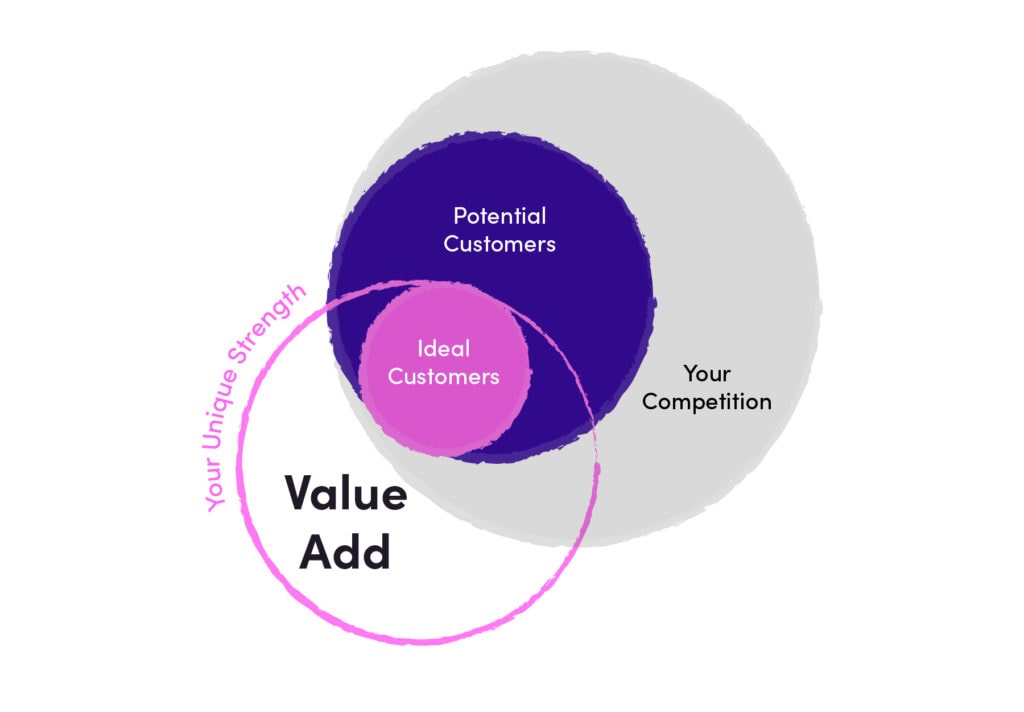Winning clients is arguably the most important task of any freelancer. But for aspiring or freshly started freelancers, it can be challenging to know where to start. Should I build a website? Write a blog? Post on Linkedin? Or just use freelance marketplaces?
The answer: None of the above.
It’s a competitive market for freelancers, and before you answer the question of where your clients are supposed to find you, you first need to define what they should think you do. And that’s where personal branding comes into play.
In this article, we will break down how you can leverage personal branding to differentiate yourself from the masses. We will specifically apply the examples to freelancers in the financial and strategy space.
Standing out matters, and you’re doing it wrong
I talk to at least ten freelancers or aspiring freelancers every week. The common denominator: They all talk about what they do. In our case at Fintalent, that usually translates to things like:
“I do Financial Modeling.”
“I really like doing valuations.”
“I really shine in post-merger integration.”
“Commercial due diligence is what I’ve done most of my career.”
And this is actually a great place to start: What are you really good at, and what do you have a lot of experience in? Chances are, this is the service you’ll be able to provide to your clients well.
However, this is not what matters to your potential clients. To stand out as freelancer with any of these services, you need to move from what you do to what your clients think you do.
In the world of marketing, this translates to translating features to benefits. And this is where your personal brand starts as well.
What is a Personal Brand, and why does it matter?
The overlap between what you do and what your clients (or anyone outside of your own bubble) think you do will never be 100%. The job of a personal brand is to gap this bridge as much as possible.
The challenge: You already do have a personal brand – everyone does. And as freelancer, your brand and your person are inseparable. So you can choose to shape it actively and bridge the gap between perception and reality, or have the world around you assign to you what they think. Your choice.

So now that we understand the basics of personal branding and why it matters, let’s take a closer look at the building blocks of a personal brand in 4 easy steps.
The personal branding process
Your personal brand consists of 4 key elements: Your ideal customer, your unique strength, your value-add, and your packaging. Let’s dive into each element.

Find your ideal customer
“When we initially try to market ourselves, we try to be everything to everyone”, Dr. Waller says. “But it’s not possible, because it’s only us.”
I’ve personally worked with quite a number of founders, and it’s incredibly common to hear founders say that their amazing product could serve anyone. That’s the easiest way to kill any new business, and it’s the same for freelancers.
Especially in our early stages, we need to be crystal clear on one specific ICP (Ideal Customer Profile). For me, an ICP combines a number of firmographic and demographic criteria.
For example, for our financial modelers this could mean only focusing on mid-market Private Equity funds that focus on hyper-growth companies (firmographic information), and within these companies, we’d want to work with investment directors (demographic information).
The choice of your ICP is strongly based on your previous experience – and your unique strength. So let’s dive into that one.
Find your unique strength
Your unique strength is the key to your differentiation (how am I different from others) and positioning (where do I position myself in the market) strategy.
“Your unique strength is what your clients come to you for”, Dr. Waller says. “It’s ultimately about positioning yourself in the market. The challenge is, that others might position themselves in a very similar fashion. So to really stand out we need to combine our unique strength with our value-add, and then package everything in a cohesive way.”
Let’s return to our financial modeler for some examples of unique strengths:
- Industry focus / long experience
- Outstanding analytical skills
- Seniority / able to level with senior executives on the impact of models
A good way to find out more about your unique strength is to ask your clients and colleagues – “what do you think is my strongest attribute?” goes a long way, and after 3-5 conversations, you will often hear the same elements being repeated back to you.
Now that we have identified your ideal customer and your unique strength, we have a strong foundation. But we still have to figure out our value add to truly stand out and differentiate yourself.
Finding your value add
Steve Jobs said that you don’t look at the competition to do it better, but do it differently. So to understand our unique value add, we need to look at our ideal customer, our unique strength, and how we can differentiate ourselves while adhering to these two “success factors”.
I personally worked as a marketing freelancer for over 7 years, and while I knew my strength for a long time, it was only when I found my unique value add that I started gaining traction as freelancer, could command hire rates, and have more conversations with potential clients.
In my case, I understood fast that my ideal customer were CEOs and Sales leaders at B2B SaaS companies with early traction. My unique strength was that I am an all-around marketer, and could strategize and execute on every part of the marketing stack. But over time, when working with my clients, I realized that my unique value add was the capability of advising the company’s overall go-to-market strategy and build marketing teams that work closely with Sales. This combination was unique enough to ultimately packaging it as “I build revenue-generating marketing motions in B2B SaaS startups from scratch.” My freelance career really took off after that was clear for me and my potential clients.
Back to our financial modelers. Let’s assume that our financial modelers are especially strong in their prospective sector, with heaps of industry experience. Potential unique value adds could be:
- The ability to transform data into insights and strategy recommendations
- Storytelling capabilities around the models
- Fast turnaround and feedback loops
Whatever the value add is – it should be anchored in actual customer feedback and your unique view and insight on your customers’ problems.
Packaging your freelance offering
Now that we have put our success factors together, it’s time to package them. Packaging them means nothing else than formulating them in a way that is understandable for the customer, and clearly communicates the differentiated value we deliver to them. A good format for that is the classic value proposition: I help X to achieve Y by delivering Z.
While the words matter and are easy to assemble and play around with once you’ve done the groundwork, it’s harder to create a consistent image in the marketplace where you want to attract your customer. There’s heaps of advice on, for instance, creating an appealing Linkedin profile.
Dr. Waller’s take: “Titles are generic, so it’s easy to mistake what they mean. It’s important to focus on communicating the difference in what you deliver, and make it crystal-clear what it is you’re offering. If that foundation is set, you can manage the expectations of your clients and say, ‘hey, this is what you’re gonna get from me’”. So ultimately, the packaging is what helps you create consistency in your outside appearance.
It’s important to focus on communicating the difference in what you deliver, and make it crystal-clear what it is you’re offering.
Now that we have created our personal brand, are we done? Not yet – because now we have to make sure to test it in the real market.
Testing, validating, and improving our personal freelance brand
Writing down your ideas for your personal brand is only the first step to truly differentiate yourself in the market. The next step is to actually test is with potential customers, and create a consistent appearance.
In this article, we won’t walk through the different ways to market yourself as a freelancer. But positioning and differentiating yourself is the very first step on this journey.
Building a brand takes time. The most important aspect of a brand is trust. It’s a relationship, and it’s not always about being visible. It’s about delivering exactly what’s expected of you.
Dr. Talaya Waller
Go ask your potential clients about what they think of your positioning and incorporate their feedback. But give your brand the space to grow and build a reputation in the market. Make sure you own what your customers think you do. Listen to their feedback. And carefully improve and sharpen over time.
My entire conversation with Dr. Talaya Waller is now online in our podcast. Learn more about Talaya on her website or at Valuables.


